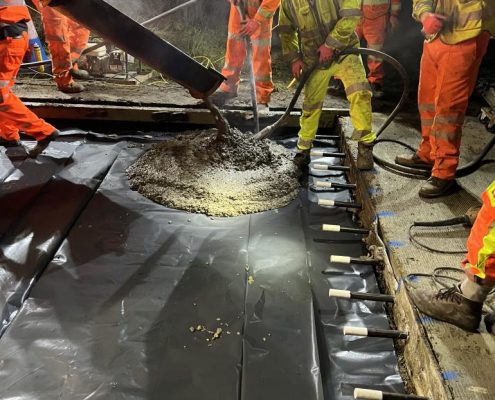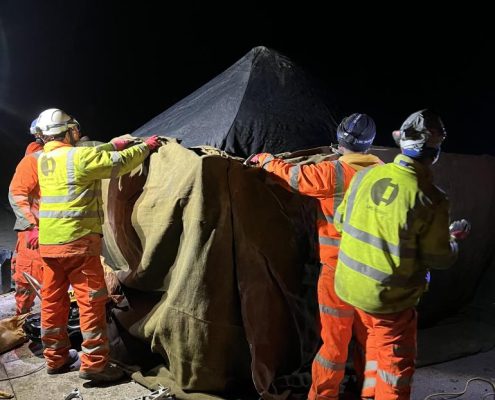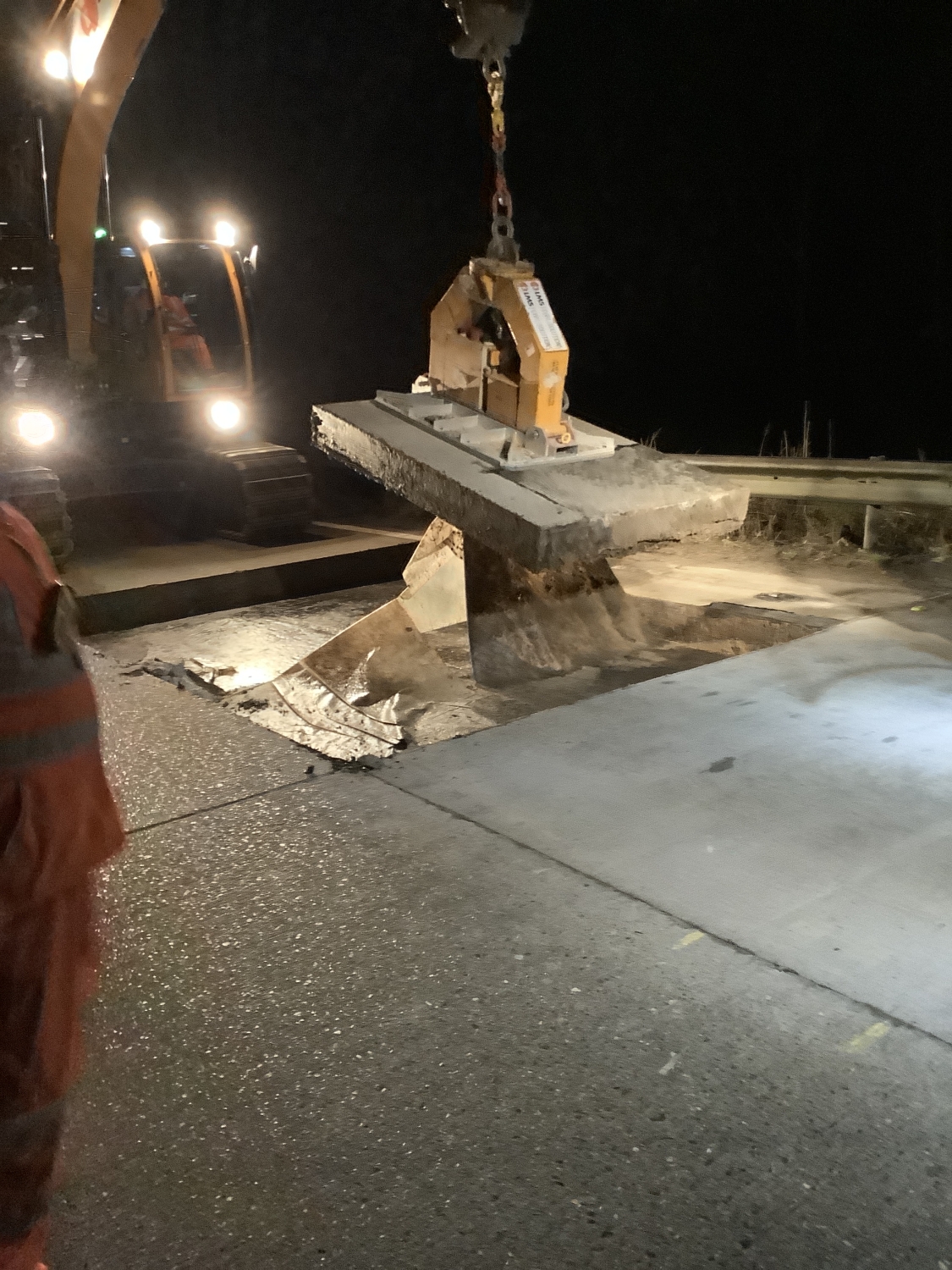LMS Highways delivers concrete bay replacements and various other repairs as part of a multi-phase reconstruction scheme on the A11.
In 2021 LMS Highways began working on a National Highways scheme to repair and replace the surface of the A11 between Spooner Row and Thickthorn Interchange in Norfolk. This scheme, due to take place over several phases, is a part of a nationwide drive to revitalise roads with concrete road surfaces across the country.
The surface of concrete roads that were designed between the 1950’s and 1970’s have an average life span of 50 years. Despite providing many years of virtually maintenance free life, decades of use and hundreds of millions of journeys had left the A11 in need of vital upgrades which will improve safety, create a smoother surface and reduce noise for the 45,000 drivers who travel on it every day.
The repairs carried out will extended the life of the existing road surface by up to 10 years and reduce the maintenance required, resulting in fewer roadworks along this section and improve safety and driving conditions for motorists on the A11. The sections of carriageway which received full concrete bay replacements will benefit from an expected service life of upwards of 50 years and require fewer, easier and quicker maintenance repairs in the future meaning more reliable journeys for road users.
In October of 2021, LMS Highways were instructed to provide a package of works consisting of concrete bay replacements, thin bond repairs, joint sealing and various types of crack repairs spanning around 4 miles between Tuttles Interchange and Wymondham and Thickthorn on the carriageway and slip roads in both directions. Phase one saw the team install around 1,000 cubic metres of concrete in 100 shifts over a period of 13 weeks.
1,400
Cubic Meters of Concrete Installed
128,000+
Linear Metres of Joint Sealing
107,900+
Linear Meters of Thin Bond Repairs
329,000+
Linear Metres of Various Crack Repairs
In February of 2023 LMS Highways were once again requested back to deliver phase two of the A11 reconstruction scheme this time working on the Hethersett Bypass between Wymondham and Cringleford on both the North and Southbound Carriageway. This phase saw an additional 360+ cubic metres of concrete installed over 24 shifts.
Both phases of this projects saw segments of the concrete carriageway repaired with new full depth concrete bays along with other sections receiving preventative services like crack and joint repairs to the less severe sections. Preventative repairs like these are commonly used in large projects where possible, to keep the overall cost down as they help repair and extend the life of an existing carriageway before it reaches a stage of disrepair where then a full bay replacement would be necessary.
At LMS Highways we pride ourselves on our rapid concrete bay replacement services which can see bays being removed, reinstalled and road opened to the public again all within an impressive 6 hour period. This is all achievable by using our bespoke equipment, quality products and our fine tuned processes.
Concrete bay removal will be done in one of two ways, either by using a combination of pecker and bespoke lifting bucket or our vacuum lifting plate, both of which are capable of lifting and removing large continuous sections of concrete without needing to break them down into smaller pieces saving a great amount of time.
The new concrete bays are recast using a fast curing concrete, this rapid set mix along with conventional heating methods of tents and space heaters insures the concrete hardens to a trafficable state within as little as 4 hours as opposed to other traditional concrete mixes which can have a hardening time taking between 7 and 28 days. Therefore making this service incredibly desirable for clients who are looking for minimal road closure time and little to no disruption to daily commuting.
Once the new bays were installed we then perform a services called joint sealing, this is to help extend the service life of the new concrete bays and prevent water ingress. This is done by blowing out the joints with a lance before installing a hot applied N1 sealant around all the new bay joints. A total of around 129,000 linear meters of joint sealing was installed throughout this project.
Additional repairs were made to the surface cracking by performing Thin Bond Repairs. This is a repair designed to fix thin surface cracking due to pavement movement, repairing broken slab corners and to reform levels between slabs. Thin Bond Repairs are installed by firstly planing out the crack and surrounding area to the diameter of 200mm wide by 50mm deep. This is then primed and infilled using Maxi Crete, which is a BBA approved, resin based, flexible repair material. This is a preventative service which prolongs the life of cracked surface before a larger patch repair or bay replacement is necessary.
With decades of experience, LMS Highways are experts in delivering these time critical concrete repair projects and with our highly trained teams we are capable of delivering these varied services under a single point of contact. This, along with early contractor involvement and a streamlined programme allows us to complete projects within desired timescales and on-budget avoiding costly delays for main contractors and disruption for road users.























